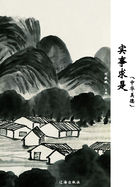SHEEP-LAUREL, LAMB-KILL, WICKY, CALF-KILL, SHEEP-POISONNARROW-LEAVED LAUREL (K.angustifolia), and so on through a list of folk names testifying chiefly to the plant's wickedness in the pasture, may be especially deadly food for cattle, but it certainly is a feast to the eyes.However much we may admire the small, deep crimson-pink flowers that we find in June and July in moist fields or swampy ground or on the hillsides, few of us will agree with Thoreau, who claimed that it is "handsomer than the mountain laurel." The low shrub may be only six inches high, or it may attain three feet.The narrow evergreen leaves, pale on the underside, have a tendency to form groups of threes, standing upright when newly put forth, but bent downward with the weight of age.A peculiarity of the plant is that clusters of leaves usually terminate the woody stem, for the flowers grow in whorls or in clusters at the side of it below.
The PALE or SWAMP LAUREL (K.glauca), found in cool bogs from Newfoundland to New Jersey and Michigan, and westward to the Pacific Coast, coats the under side of its mostly upright leaves with a smooth whitish bloom like the cabbage's.It is a straggling little bush, even lower than the lamb-kill, and an earlier bloomer, putting forth its loose, niggardly clusters of deep rose or lilac-colored flowers in June.
TRAILING ARBUTUS; MAYFLOWER; GROUND LAUREL(Epigaea repens) Heath family Flowers - Pink, fading to nearly white, very fragrant about 1/2in.across when expanded, few or many in clusters at ends of branches.Calyx of 5 dry overlapping sepals; corolla salver-shaped, the slender, hairy tube spreading into 5 equal lobes; 10 stamens; 1 pistil with a column-like style and a 5-lobed stigma.Stem: Spreading over the ground (Epigaea = on the earth); woody, the leafy twigs covered with rusty hairs.Leaves:
Alternate, oval, rounded at the base, smooth above, more or less hairy below, evergreen, weather-worn, on short, rusty, hairy petioles.
Preferred Habitat - Light sandy loam in woods, especially under evergreen trees, or in mossy, rocky places.
Flowering Season - March-May.
Distribution - Newfoundland to Florida, west to Kentucky, and the Northwest Territory.
Can words describe the fragrance of the very breath of spring -that delicious commingling of the perfume of arbutus, the odor of pines, and the snow-soaked soil just warming into life? Those who know the flower only as it is sold in the city streets, tied with wet, dirty string into tight bunches, withered and forlorn, can have little idea of the joy of finding the pink, pearly blossoms freshly opened among the withered leaves of oak and chestnut, moss, and pine needles in which they nestle close to the cold earth in the leafless, windy northern forest.Even in Florida, where broad patches carpet the woods in February, one misses something of the arbutus's accustomed charm simply because there are no slushy remnants of snow drifts, no reminders of winter hardships in the vicinity.There can be no glad surprise at finding dainty spring flowers in a land of perpetual summer.
Little wonder that the Pilgrim Fathers, after the first awful winter on the "stern New England coast," loved this early messenger of hope and gladness above the frozen ground at Plymouth.In an introductory note to his poem "The Mayflowers,"Whittier states that the name was familiar in England, as the application of it to the historic vessel shows; but it was applied by the English, and still is, to the hawthorn.Its use in New England in connection with the trailing arbutus dates from a very early day, some claiming that the first Pilgrims so used it in affectionate memory of the vessel and its English flower association.
"Sad Mayflower I watched by winter stars, And nursed by winter gales, With petals of the sleeted spars, And leaves of frozen sails!
"But warmer suns ere long shall bring To life the frozen sod, And through dead leaves of hope shall spring Afresh the flowers of God!"Some have attempted to show that the Pilgrims did not find the flowers until the last month of spring, and that, therefore, they were named Mayflowers.Certainly the arbutus is not a typical May blossom even in New England.Bryant associates it with the hepatica, our earliest spring flower, in his poem, "The, Twenty-seventh of March":
"Within the woods Tufts of ground laurel, creeping underneath The leaves of the last summer, send their sweets Upon the chilly air, and by the oak, The squirrel cups, a graceful company Hide in their bells a soft aerial blue."There is little use trying to coax this shyest of sylvan flowers into our gardens where other members of its family, rhododendrons, laurels, and azaleas make themselves delightfully at home.It is wild as a hawk, an untamable creature that slowly pines to death when brought into contact with civilization.
Greedy street venders, who ruthlessly tear up the plant by the yard, and others without even the excuse of eking out a paltry income by its sale, have already exterminated it within a wide radius of our Eastern cities.How curious that the majority of people show their appreciation of a flower's beauty only by selfishly, ignorantly picking every specimen they can find!














